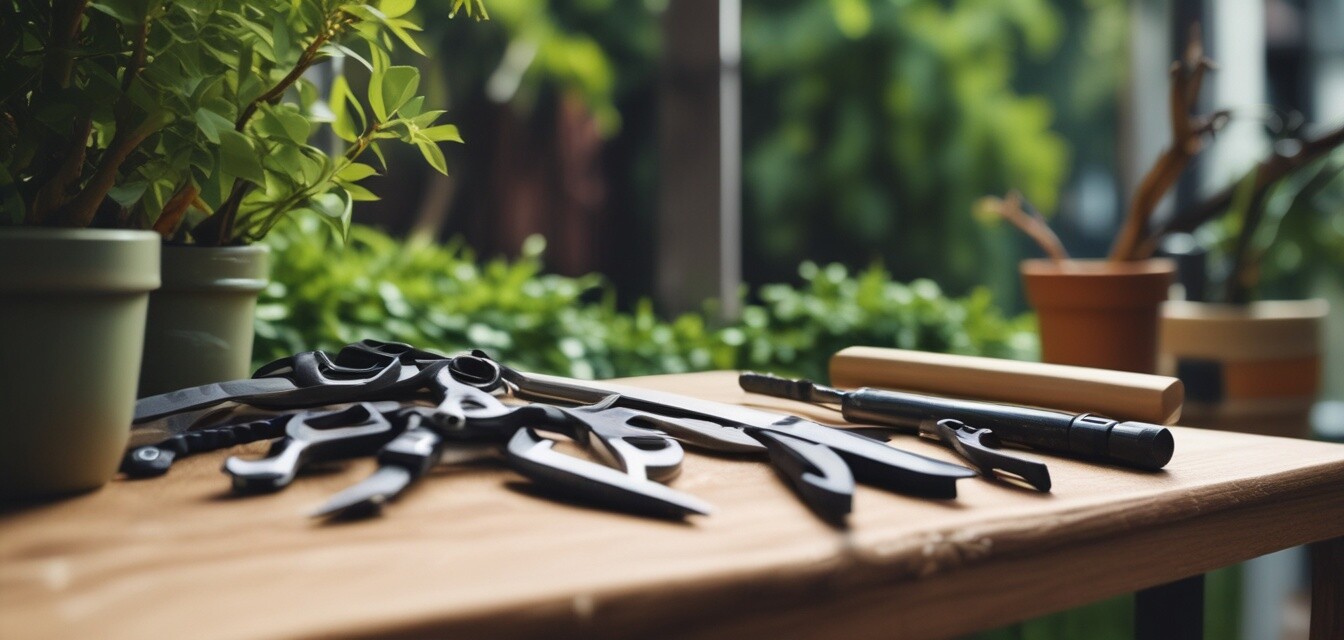
Best Practices for Maintaining Pruning Tools
Key Takeaways
- Regular cleaning and sharpening are essential for tool longevity.
- Proper storage prevents rust and extends the life of your tools.
- Using the right tool for the job makes the maintenance process easier and more effective.
- Investment in high-quality maintenance supplies enhances overall performance.
- Follow safety measures while using and maintaining your pruning tools.
Maintaining your pruning tools is key to ensuring that they perform effectively throughout the gardening season. Pruning tools are your best allies in keeping plants healthy and promoting beautiful growth. This guide will cover the best practices for caring for your pruning tools, ensuring they last for many seasons of gardening.
Why Tool Maintenance Matters
Regular maintenance of your pruning tools not only enhances their durability but also improves their performance. Dull tools can lead to ragged cuts that may harm your plants. Therefore, being proactive with the care and upkeep of your tools is essential.
Basic Maintenance Steps
- Cleaning: Remove dirt and sap after each use.
- Sharpening: Regularly sharpen blades for clean cuts.
- Oiling: Apply oil to moving parts to reduce friction.
- Storage: Store tools in a dry, safe place to prevent rust.
Cleaning Your Pruning Tools
Cleaning your pruning tools is the first step to ensuring they remain functional and effective. Here's how to do it:
| Step | Action |
|---|---|
| 1 | Rinse blades with water to remove loose debris. |
| 2 | Use a brush to scrub off stubborn sap and dirt. |
| 3 | Wipe down the handles with a damp cloth. |
For a deeper clean, consider soaking the tools in soapy water and scrubbing gently. Make sure to dry them thoroughly to prevent rust.
Sharpening Techniques
A sharp blade makes all the difference in your pruning efforts. Here’s how to sharpen your tools:
- Use a sharpening stone or file designed for gardening tools.
- Make consistent strokes along the blade at the manufacturer’s recommended angle.
- Finish off with a honing steel to polish the edge.
Sharpening Table
| Tool | Sharpening Method | Frequency |
|---|---|---|
| Pruning Shears | Sharpening stone or file | Every 3-4 uses |
| Loppers | Fine-tooth file | Every 5-6 uses |
| Saws | Handsaw file | At least once per season |
Oiling Your Tools
After cleaning and sharpening, oiling your tools is vital for maintaining their functionality:
- Use a light machine oil or vegetable oil.
- Apply oil to the blades and pivot points of the tools.
- Wipe off any excess oil with a clean cloth.
Proper Storage Techniques
Storing your pruning tools correctly can prevent rust and damage. Consider these tips:
- Keep tools in a dry location, away from moisture.
- Use a pegboard or hooks to hang tools and keep them off the ground.
- Store tools in a toolbox with silica packets to absorb moisture.
Creating an Ideal Storage Environment
Organizing your tools not only ensures they stay clean, but it also makes them easily accessible. Consider investing in a designated garden tool organizer to enhance your workspace.
Safety Measures
Maintaining your pruning tools also involves observing safety practices. Here are some important measures:
- Always wear gloves when handling sharp tools.
- Ensure blades are being sharpened away from your body.
- Keep tools closed and locked when not in use.
Conclusion
Regular maintenance of your pruning tools is crucial for their performance and longevity. By incorporating these best practices into your routine, you can enjoy a lush and thriving garden for years to come. Interested in enhancing your garden experience further? Explore our buying guides for tailored insights and recommendations!
Pros
- Improves tool lifespan.
- Enhances effectiveness of pruning.
- Promotes healthier plants through clean cuts.
Cons
- Requires time and effort.
- May necessitate additional purchasing of tools (sharpeners, oils, etc.).